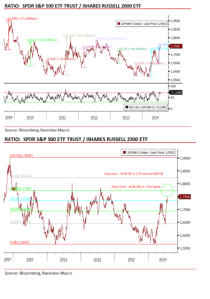According to tec hnology and trading firm ConvergEx Group, during the first 6 weeks of 2012, more than $8 billion has flowed in to U.S. Equity ETFs, while nearly $8 billion has “flown out” of U.S. equity mutual funds.
hnology and trading firm ConvergEx Group, during the first 6 weeks of 2012, more than $8 billion has flowed in to U.S. Equity ETFs, while nearly $8 billion has “flown out” of U.S. equity mutual funds.
“Some of the commentary surrounding these products has made them sound like the hoof beats which precede the Four Horsemen of the Apocalypse,” said Nicholas Colas, ConvergEx’s Chief Market Strategiest, alluding to various critiques of ETFs that have emerged over the past 18 months, notably Kauffmann Foundation reports that blamed ETFs for a dead U.S. initial public offering market, and argued huge short interest in some funds could pose systemic risk.
“If you want to understand how investment capital flows play into the year-to-date rally for risk assets, the world of exchange-traded funds is essentially your ‘One Stop Shop,’” Colas said in the note, stressing that whatever negative comments are being made about ETFs, they are a great way to gauge overall sentiment in financial markets.
“But for 2012, you can just as accurately call them the most visible source of capital to help U.S. stocks and other risk assets higher,” Colas wrote.
Most Popular Funds
As far as the individual funds that have really “Killed it” in year-to-date asset gathering this year-to-date, Colas said the ETFs that have pulled in over $1 billion include:
- iShares iBoxx $ High Yield Corporate Bond Fund (NYSEArca: HYG)
- iShares MSCI Emerging Markets Index Fund (NYSEArca:EEM)
- iShares Russell 2000 Fund (NYSEArca:IWM)
- iShares $ Investment Grade Corporate Bond Fund (NYSEArca: LQD)
- Vanguard MSCI Emerging Markets ETF (NYSEArca:VWO)
- Powershares QQQ (NasdaqGM QQQ)
- SPDR Barclays High Yield Bond ETF (NYSEArca: JNK)
- SPDR Gold Trust (NYSEArca: GLD)
Apart from the strong push into U.S. equities, Colas said emerging markets and precious metals are coming back into favor, with inflows of $9.1 billion and $2 billion, respectively.
”We’ve noticed a trend now for at least a year where investors use country-specific funds in lieu of regional products,” Colas said, singling out a number of those funds that have gathered more than $100 million dollars in new investments since the start of the year.
Among those are:
- iShares FTSE China 25 Index Fund (NYSEArca: FXI)
- iShares MSCI China Index Fund (NYSEArca: MCHI)
- iShares MSCI Germany Index Fund (NYSEArca: EWG)
- Market Vectors Russia ETF (NYSEArca: RSX)
- iShares MSCI Chile Index Fund (NYSEArcaECH).
“I have no doubt that mutual fund flows will eventually turn positive, and we’ll have to keep an eye on this trend when it develops,” Colas said.
“But for now, exchange traded funds look to be the horse pulling the market’s proverbial cart.”





